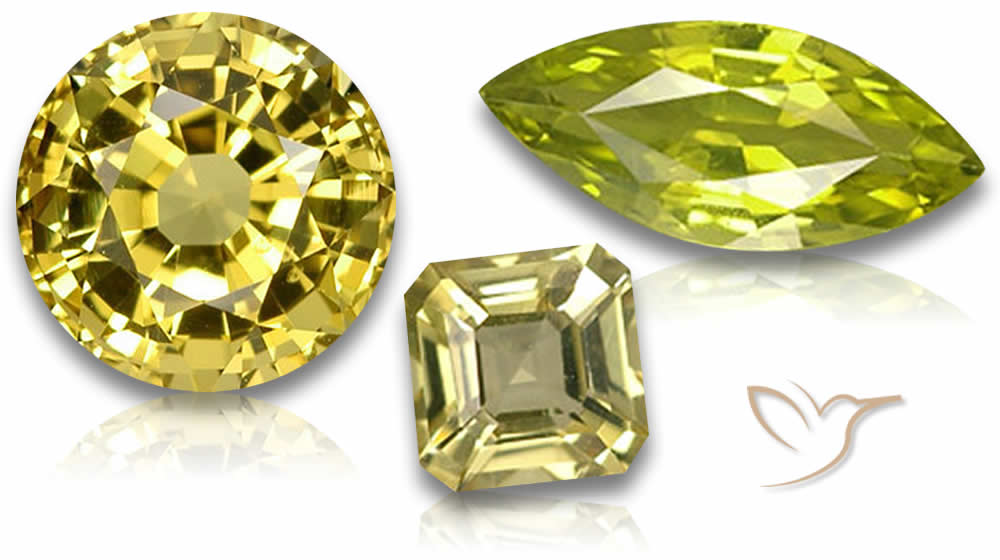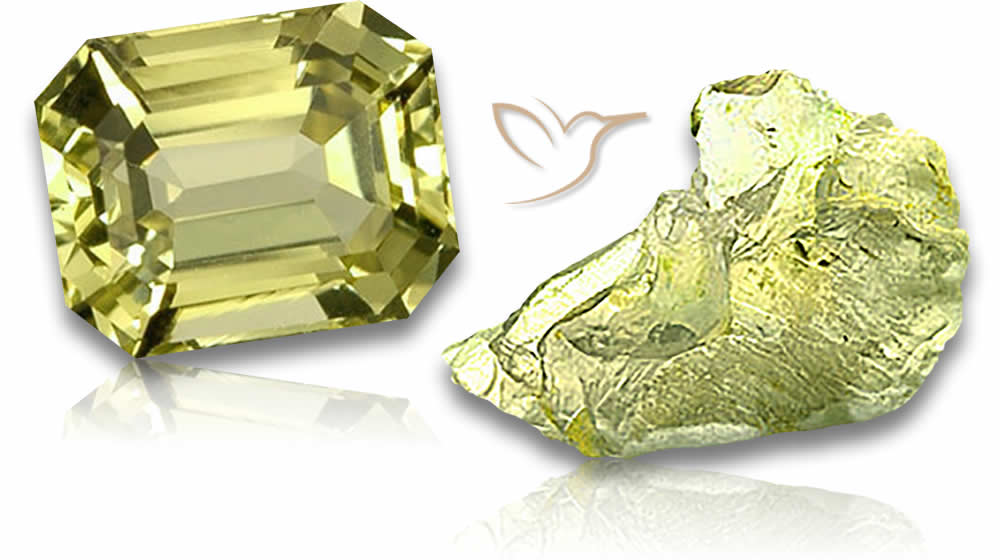Discover Chrysoberyl Gemstone Facts & Insights

Welcome to our comprehensive guide on chrysoberyl gemstones. As gemstone enthusiasts, we believe that understanding chrysoberyl gemstone information is essential for appreciating their unique beauty and value fully. In this section, we will provide you with all the essential details you need to know about chrysoberyl gemstones. From their properties to their uses, we've got you covered.
Key Takeaways:
- Chrysoberyl gemstones are highly valued and captivating gems.
- Understanding their unique properties, types, and uses is vital for appreciating their intrinsic value fully.
- Factors that influence chrysoberyl gemstone value include color, clarity, cut, and carat weight.
- Chrysoberyl gemstones have a wide range of uses in industries such as jewelry making and technology.
- Whether you're a collector or a gemstone enthusiast, chrysoberyl gemstones are sure to captivate you with their exquisite beauty and charm.
See our current stock of Chrysoberyl Gemstones here.
Understanding Chrysoberyl Gemstone Properties
Chrysoberyl gemstones have a range of distinctive properties that make them highly sought after. One of the most well-known varieties is the alexandrite chrysoberyl, which is highly coveted for its unique color-changing properties. In natural light, it appears greenish-blue, and in incandescent light, it shifts to a reddish-purple hue. This phenomenon is known as the alexandrite effect.
In addition to color, chrysoberyl gemstones are also known for their exceptional hardness, making them ideal for use in a variety of jewelry pieces. On the Mohs scale of mineral hardness, which ranges from 1 to 10, chrysoberyl rates an 8.5, making it one of the hardest gemstones available.
Chrysoberyl is also highly durable, making it an excellent choice for use in rings and other frequently worn jewelry pieces. Additionally, it has high transparency, with very little internal inclusions or flaws to hinder its brilliance.
"The unique properties of chrysoberyl gemstones make them not only stunning to look at, but also highly valuable and versatile."
Different Types of Chrysoberyl Gemstones
Chrysoberyl gemstones come in various types other than alexandrite, and each has its unique charm. The popular varieties are cat's eye chrysoberyl and yellow/green chrysoberyl.
Cat's Eye Chrysoberyl
Cat's Eye Chrysoberyl is a rare gemstone that displays a captivating chatoyant band in the center. The "cat's eye" effect is due to the presence of parallel, needle-like inclusions called rutile. The color of cat's eye chrysoberyl ranges from greenish-yellow to yellowish-green and can be transparent or translucent.
Cat's Eye Chrysoberyl is primarily found in Sri Lanka, but also in Brazil, India, and Burma. It has good hardness and durability, making it a popular choice for jewelry, especially for men's rings and cufflinks. The value of cat's eye chrysoberyl depends on the strength of the chatoyancy, color, and transparency.
Yellow/Green Chrysoberyl
Yellow/Green Chrysoberyl, also known as cymophane, is a variety of chrysoberyl that has a characteristic coloration of yellowish-green to greenish-yellow. It displays the same pleochroic color-change properties as alexandrite, making it a fascinating gemstone. Yellow/green chrysoberyl can be found in Brazil, Sri Lanka, and Tanzania and has a Mohs hardness of 8.5.
Yellow/green chrysoberyl is a popular gemstone in the world of jewelry-making, as its unique combination of colors can produce exquisite rings, pendants, and earrings. It has a high value, which depends on factors such as color saturation, transparency, and size.
Determining Chrysoberyl Gemstone Value and Uses
Chrysoberyl gemstones are highly valued for their unique properties and characteristics, which determine their worth in the market. One of the most significant factors in determining the value of a chrysoberyl gemstone is its color. The finest quality chrysoberyl will display a distinct greenish-yellow hue that is not too light or too dark.
In addition to color, clarity is another important factor when assessing chrysoberyl gemstone value. A gemstone with little to no inclusions or blemishes will be highly sought after and command a higher price.
The cut of the chrysoberyl gemstone also plays a crucial role in its value. A well-cut gemstone will have superior light reflection and brilliance, making it more attractive and desirable.
Carat weight is also a vital consideration when evaluating the value of a chrysoberyl gemstone. The larger the gemstone, the higher its worth, although other factors like color and clarity must also be considered.
Aside from their value, chrysoberyl gemstones also have a broad range of uses, primarily in the jewelry industry. They are a favorite among designers due to their unique beauty and versatility, which allows them to be used in various jewelry styles.

Chrysoberyl gemstones are not just limited to jewelry-making, as they have found applications in other industries such as watchmaking, electronics, and optics. Their unique optical properties make them valuable as lenses and other high-tech applications.
Dazzle with Stunning Chrysoberyl Jewelry
Chrysoberyl gemstones are highly sought after in the world of jewelry for their exceptional beauty and durability. Their unique color-changing alexandrite variety is particularly coveted for its rarity and mesmerizing hue. These gems can be found in a wide range of jewelry pieces, from earrings and pendants to bracelets and engagement rings, making them a versatile choice for any occasion.
Due to their excellent hardness and durability, chrysoberyl gems are perfect for daily wear jewelry pieces like rings and bracelets. Their resistance to scratches and chips means they can be worn regularly without losing their luster or brilliance.
Chrysoberyl jewelry is also popular among collectors, especially pieces featuring the cat's eye chrysoberyl variety. The unique optical phenomenon of this gemstone, caused by needle-like inclusions, creates a captivating slit of light that resembles a feline's eye. This effect is highly sought after, making cat's eye chrysoberyl jewelry a desirable addition to any collection.
Beyond their beauty and allure, chrysoberyl gemstones also hold value in various industries. They are used in high-precision instruments due to their strong resistance to thermal shock and chemical reactivity. Additionally, their optical properties make them valuable in laser technology and in the production of UV filters.
In conclusion, chrysoberyl jewelry is a captivating and versatile choice for any jewelry lover or collector. Its combination of durability, beauty, and unique properties make it a gemstone of high value in both the world of jewelry and beyond.
FAQ
What is chrysoberyl gemstone?
Chrysoberyl is a gemstone known for its exceptional brilliance and durability. It is a mineral composed of beryllium aluminum oxide and belongs to the beryl family.
What are the properties of chrysoberyl gemstone?
Chrysoberyl gemstones exhibit a range of colors, including yellow, green, and brown. The most prized variety, alexandrite, displays a remarkable color-changing effect. Chrysoberyl gemstones are also known for their hardness, ranking 8.5 on the Mohs scale, and their excellent transparency.
What are the different types of chrysoberyl gemstones?
Chrysoberyl gemstones are available in various types. The most well-known is alexandrite, which exhibits a color change from green in daylight to red under incandescent light. Other popular types include cat's eye chrysoberyl, known for its chatoyancy or "cat's eye" effect, as well as yellow and green chrysoberyl.
How is the value of chrysoberyl gemstone determined?
The value of a chrysoberyl gemstone is influenced by several factors. These include the color, with alexandrite displaying the most sought-after color-changing effect, as well as clarity, cut, and carat weight. Exceptional clarity and intense color saturation can significantly increase its value.
What are the common uses for chrysoberyl gemstones?
Chrysoberyl gemstones are highly valued for their use in jewelry. They are often faceted into stunning gemstones for rings, earrings, pendants, and bracelets. Additionally, chrysoberyl gemstones are used in various industries, including optics, as they have excellent transparency and can be used as gemstone lenses.
How should I care for my chrysoberyl jewelry?
To ensure the longevity of your chrysoberyl jewelry, it is recommended to store it separately from other gemstone jewelry to prevent scratches. Clean the gemstone with a soft cloth and avoid exposing it to harsh chemicals or sudden temperature changes. Regular professional cleaning and inspection can help maintain the gemstone's beauty.

